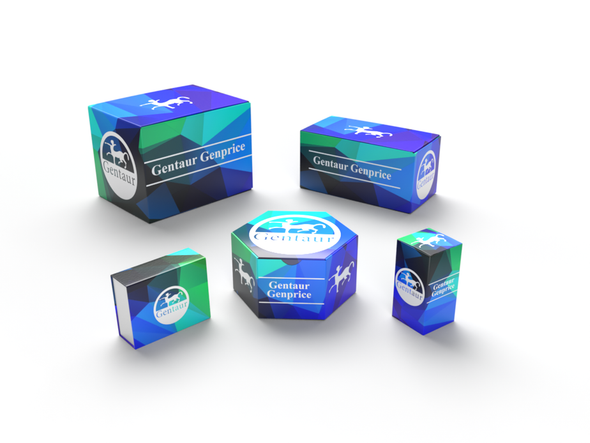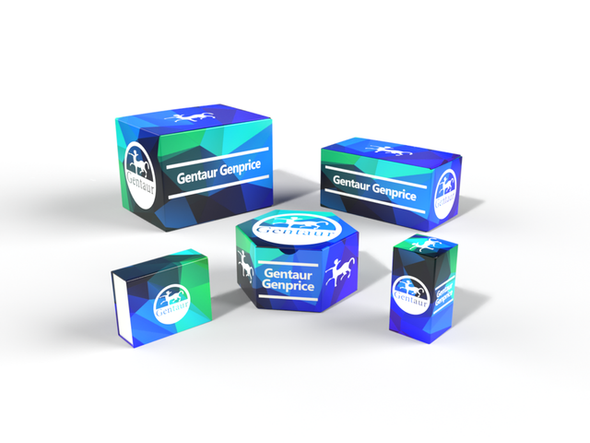740
Rat C-type natriuretic peptide (CNP) ELISA Kit | AE58191RA
- SKU:
- 740-AE58191RA
- Availability:
- Usually ships in 5 working days
Description
Rat C-type natriuretic peptide (CNP) ELISA Kit | AE58191RA | Gentaur UK, US & Europe Distribution
Species Reactivity: Rat (Rattus norvegicus)
Abbreviation: NPPC
Alternative Name: CNP; OTTHUMP00000203815
Application: ELISA
Range: 31.25-2000 pg/mL
Sensitivity: 12.4 pg/mL
Intra-Assay: ≤4.3%
Inter-Assay: ≤8.3%
Recovery: 0, 89
Sample Type: Serum, Plasma, Other biological fluids
Detection Method: Sandwich
Analysis Method : Quantitive
Test Principale: This assay employs a two-site sandwich ELISA to quantitate NPPC in samples. An antibody specific for NPPC has been pre-coated onto a microplate. Standards and samples are pipetted into the wells and anyNPPC present is bound by the immobilized antibody. After removing any unbound substances, a biotin-conjugated antibody specific for NPPC is added to the wells. After washing, Streptavidin conjugated Horseradish Peroxidase (HRP) is added to the wells. Following a wash to remove any unbound avidin-enzyme reagent, a substrate solution is added to the wells and color develops in proportion to the amount of NPPC bound in the initial step. The color development is stopped and the intensity of the color is measured.
Product Overview: C-type natriuretic peptide (CNP), the third member of the natriuretic peptide family, has been found at its highest tissue concentrations in the anterior pituitary, where it is localised in gonadotrophs. Its specific guanylyl cyclase-containing receptor, GC-B, is also expressed on several anterior pituitary cell types, and CNP potently stimulates cGMP accumulation in rat pituitary cell cultures and pituitary cell lines. The mouse gonadotroph-derived alpha T3-1 cell line has been shown to express CNP as well as GC-B (but not GC-A) receptors, suggesting that CNP may well be an autocrine regulator of gonadotrophs. Protein kinase C activation with phorbol esters also inhibited CNP-stimulated cGMP accumulation and such inhibition was also seen in cells desensitised by pretreatment with CNP. Thus it appears that the endogenous GC-B receptors of alpha T3-1 cells are subject to both homologous and heterologous desensitisation, that the mechanisms underlying these forms of desensitisation are distinct, and that cGMP elevation alone is insufficient to desensitise GC-B receptors.
Stability: The stability of ELISA kit is determined by the loss rate of activity. The loss rate of this kit is less than 5% within the expiration date under appropriate storage condition. The loss rate was determined by accelerated thermal degradation test. Keep the kit at 37°C for 4 and 7 days, and compare O.D.values of the kit kept at 37°C with that of at recommended temperature. (referring from China Biological Products Standard, which was calculated by the Arrhenius equation. For ELISA kit, 4 days storage at 37°C can be considered as 6 months at 2 - 8°C, which means 7 days at 37°C equaling 12 months at 2 - 8°C) .






